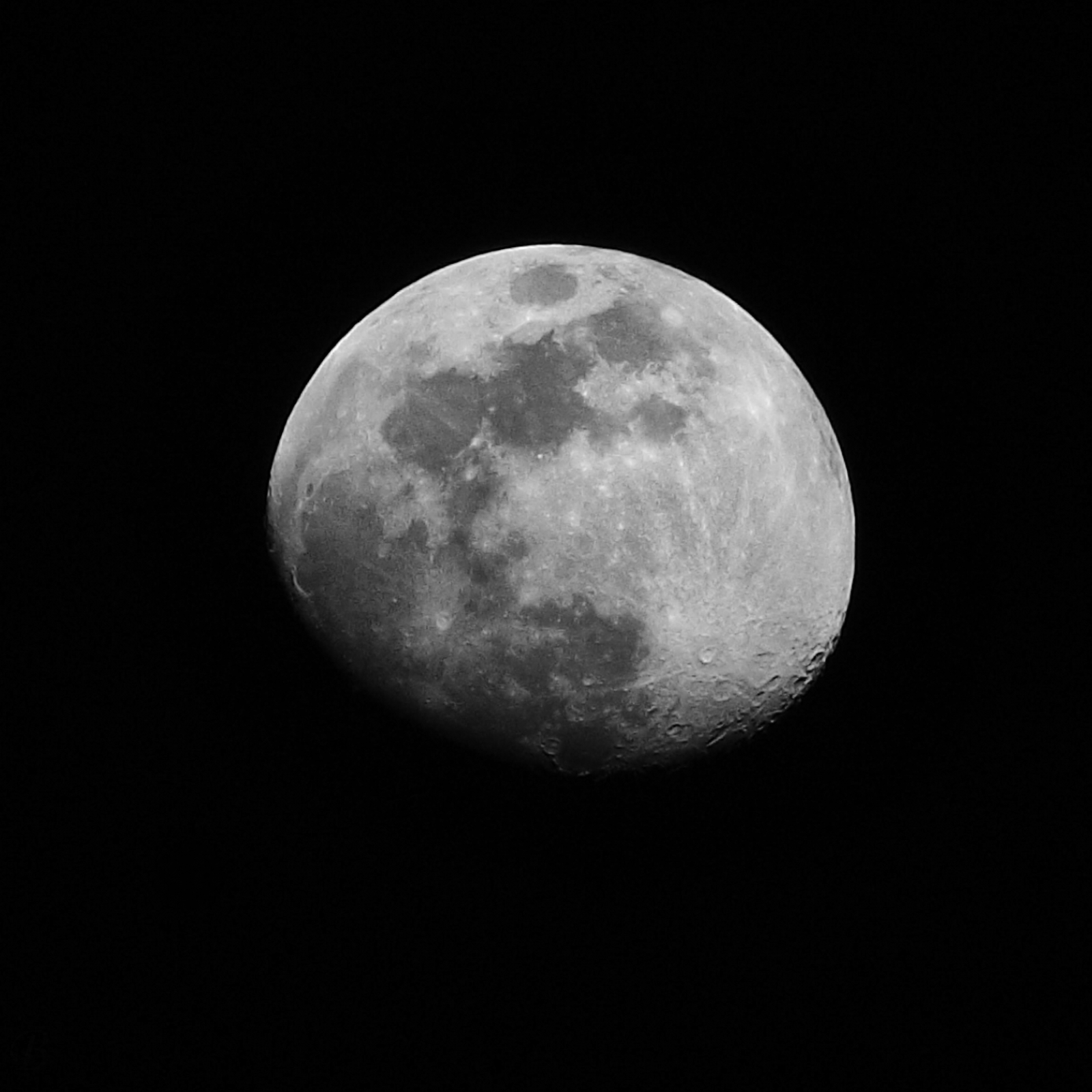Results 1 to 14 of 14
-
5th July 2017, 12:30 PM #1

- Join Date
- Oct 2013
- Location
- Philippines
- Posts
- 12,181
- Real Name
- Brian
Waxing Gibbous (Hump Back) Moon ~ Black & White ~ FujiFilm S4200
-
6th July 2017, 08:36 AM #2
Re: Waxing Gibbous (Hump Back) Moon ~ Black & White ~ FujiFilm S4200
Very nice.
-
6th July 2017, 09:21 AM #3

- Join Date
- Oct 2013
- Location
- Philippines
- Posts
- 12,181
- Real Name
- Brian
-
6th July 2017, 09:30 AM #4Moderator


- Join Date
- Feb 2009
- Location
- Glenfarg, Scotland
- Posts
- 21,402
- Real Name
- Just add 'MacKenzie'
Re: Waxing Gibbous (Hump Back) Moon ~ Black & White ~ FujiFilm S4200
That is a very good image. The detail is good (all the better for not shooting when it is full) and the idea of the moon not being full provides a much better composition.
-
6th July 2017, 09:53 AM #5
Re: Waxing Gibbous (Hump Back) Moon ~ Black & White ~ FujiFilm S4200
Now that is really getting there....

I tend to reduce the glare more by increasing shadows and reducing highlights, but that is merely a matter of personal taste. Can't wait to see what you do when you get a new lens....
-
6th July 2017, 10:47 AM #6

- Join Date
- Oct 2013
- Location
- Philippines
- Posts
- 12,181
- Real Name
- Brian
Re: Waxing Gibbous (Hump Back) Moon ~ Black & White ~ FujiFilm S4200
Not sure if it will be a new lens or a new camera. The Panasonic Lumix DC-FZ80 bridge has a lot going for it and can be used in the yard for birds and beasties plus it's great for the moon.
-
6th July 2017, 10:47 AM #7

- Join Date
- Oct 2013
- Location
- Philippines
- Posts
- 12,181
- Real Name
- Brian
-
6th July 2017, 02:36 PM #8

- Join Date
- Feb 2012
- Location
- Texas
- Posts
- 6,956
- Real Name
- Ted
Re: Waxing Gibbous (Hump Back) Moon ~ Black & White ~ FujiFilm S4200
Here's some advice for us all to consider:
Aperture…Aperture…Aperture…
"For moon photography tiny aperture works the best, as the moon, obviously, is huge distance away. You would want to employ a big f-stop number. Some photographers like to use nothing smaller than F22, as this f-stop number produces sharp photos. Aim for F22, if you can.
Sure, you should not limit yourself to only F22, since it’s just a baseline number. Feel free to experiment with even higher f-stop numbers while shooting the moon."
http://photodoto.com/four-basic-tips...hing-the-moon/
(my bold). Absolutely hilarious! Some pedantry follows . . .
At the "baseline" f/22, the diffraction blur circle (Airy Disk) of 30um diameter would cover (i.e. blur out) 5 pixel-widths on an average sensor (say 6um pitch).
https://www.cambridgeincolour.com/tu...hotography.htm
I have a Sigma lens that goes up to f/45 but I won't bother to experiment because that would quadruple the area of pixels blurred out!
As we know, most lenses have a "sweet spot" in between abberations and diffraction, often f/5.6, where they are at their sharpest. That gives a blur circle of of 7.7um diameter which most modern sensor pixels can fit inside easily.Last edited by xpatUSA; 6th July 2017 at 02:55 PM.
-
6th July 2017, 02:53 PM #9

- Join Date
- Oct 2013
- Location
- Philippines
- Posts
- 12,181
- Real Name
- Brian
-
6th July 2017, 02:59 PM #10

- Join Date
- Feb 2012
- Location
- Texas
- Posts
- 6,956
- Real Name
- Ted
-
6th July 2017, 08:47 PM #11
Re: Waxing Gibbous (Hump Back) Moon ~ Black & White ~ FujiFilm S4200
Thanks Ted, I needed that reminder.... I'm so used to my own technique for shooting the moon that I've not checked to see if there is a difference since changing my Sigma telephoto last year. (500mm to 600mm)As we know, most lenses have a "sweet spot" in between abberations and diffraction, often f/5.6, where they are at their sharpest. That gives a blur circle of of 7.7um diameter which most modern sensor pixels can fit inside easily.
Perfect excuse to stay up late drinking wine waiting for the clouds to clear... we are having a hot spell and I can't settle ...

-
6th July 2017, 11:30 PM #12

- Join Date
- Oct 2013
- Location
- Philippines
- Posts
- 12,181
- Real Name
- Brian
Re: Waxing Gibbous (Hump Back) Moon ~ Black & White ~ FujiFilm S4200
-
7th July 2017, 12:06 AM #13
-
7th July 2017, 12:53 AM #14

- Join Date
- Oct 2013
- Location
- Philippines
- Posts
- 12,181
- Real Name
- Brian
Re: Waxing Gibbous (Hump Back) Moon ~ Black & White ~ FujiFilm S4200

 Helpful Posts:
Helpful Posts: 

 Reply With Quote
Reply With Quote


